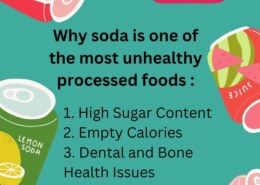Which good bacteria is used in the preparation of yoghurt?
Good Manufacturing Practices (GMP) provide guidelines for sanitation, equipment maintenance, employee hygiene, and proper handling of raw materials. Hazard Analysis and Critical Control Points (HACCP) is a systematic approach to identifying, evaluating, and controlling food safety hazards. It involvRead more
Good Manufacturing Practices (GMP) provide guidelines for sanitation, equipment maintenance, employee hygiene, and proper handling of raw materials.
Hazard Analysis and Critical Control Points (HACCP) is a systematic approach to identifying, evaluating, and controlling food safety hazards. It involves setting critical control points, monitoring procedures, and taking corrective actions when necessary.
In the U.S., the Food Safety Modernization Act (FSMA) emphasizes preventive measures to avoid food safety problems, focusing on proactive rather than reactive approaches.
Internationally, the ISO 22000 standard specifies requirements for a food safety management system, integrating principles from HACCP and GMP. Clear labeling and allergen control regulations prevent adverse health reactions by properly identifying common allergens like peanuts, gluten, and dairy. Effective traceability systems are crucial for tracking food products through the supply chain, and recall procedures ensure that contaminated or unsafe products are swiftly removed from the market. Together, these standards and protocols work to prevent foodborne illnesses and ensure public confidence in the food supply.
See less

The good bacteria used in the preparation of yogurt are called Lactobacillus bulgaricus and Streptococcus thermophilus. These are friendly bacteria that help turn milk into yogurt. Preparation of Yogurt First, the milk is heated to kill any harmful bacteria. Then, it's cooled down, and the goRead more
The good bacteria used in the preparation of yogurt are called Lactobacillus bulgaricus and Streptococcus thermophilus. These are friendly bacteria that help turn milk into yogurt.
Preparation of Yogurt
First, the milk is heated to kill any harmful bacteria. Then, it’s cooled down, and the good bacteria are added. These bacteria eat the sugars in the milk and produce lactic acid. The lactic acid makes the milk thick and gives yogurt its tangy taste.
Lactobacillus bulgaricus and Streptococcus thermophilus work together to make yogurt healthy. They help our digestive system by increasing the number of good bacteria in our gut. This can help us digest food better and keep our stomachs healthy.
These bacteria not only transform the milk but also provide health benefits. They help maintain a healthy balance of gut bacteria, aid digestion, and boost the immune system. Additionally, consuming yogurt with live cultures of these bacteria can improve lactose digestion for people who are lactose intolerant.
See less